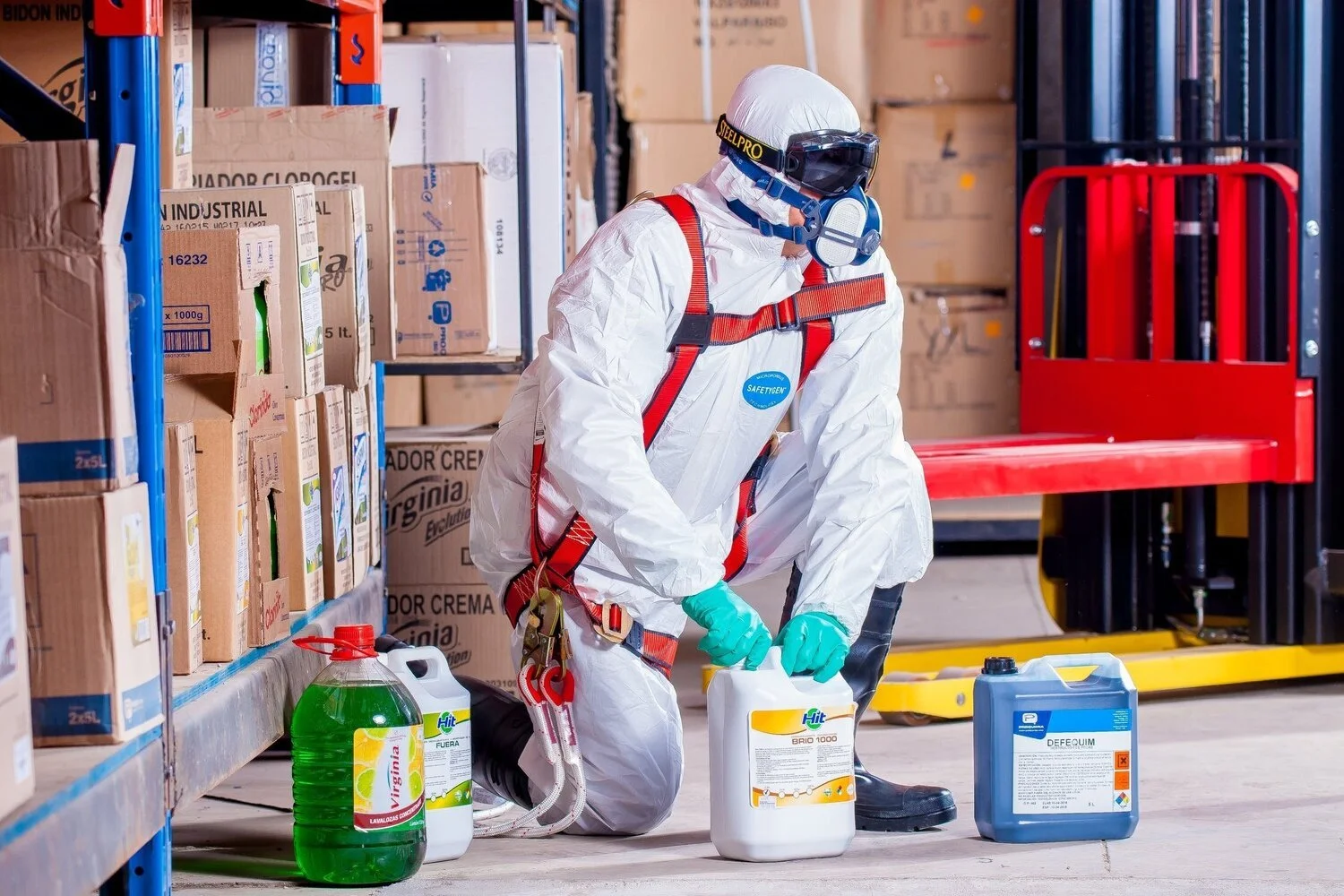Safe practice for storing hazardous substances on construction sites
RH Business Marketing Solutions
By Kevin Rowe, Managing Director of SafetyBuyer.com
Construction has historically been one of the industries with the highest risk of possible workplace safety hazards in the UK, so it is crucial for employers in the construction sector to maintain the highest standard of health and safety planning. A crucial component of this planning should be ensuring that your construction site has sufficient secure procedures in place for the handling and storage of hazardous materials.
Cement, paint, caustic chemicals, glues, solvents, and other products that produce inhalable vapours, fumes, and dust are just a few of the hazardous elements used regularly in the construction industry. Each of these might cause environmental or human harm if stored or managed improperly.
The Control of Substances Hazardous to Health (COSHH) laws in the UK provide a legal obligation on all construction businesses that store hazardous materials and chemicals on site to enforce specific information on how these risks should be managed.
Essential safety measures for storing hazardous materials on building sites
If storing hazardous chemicals is a requirement on your construction site, you and your team should be taking the following aspects into account:
● Ensure the designated storage area is organised, well-lit, adequately ventilated and has ample space to safely store all of the potentially hazardous materials
● The storage area's surfaces must all be resistant to the materials being stored and be easy to clean
● All potentially harmful substances and chemicals must be kept in accordance with the manufacturer’s recommendations and instructions
● Store incompatible substances separately if it is unsafe to keep them together
● Keep potentially flammable materials away from ignition sources, such as heaters and boilers
● For ease of identification, every item must have legible and accurate labels
● The number of different hazardous substances being stored should be kept to a minimum, as should the quantity of each substance kept on site
● Hazardous materials should be kept close to spill cleanup kits, so that staff have easy access to cleaning materials in case of a spill
● Chemical and liquid storage facilities should be kept above ground, where they are less likely to be damaged
● Storage spaces for hazardous compounds should be clearly designated with the proper safety signs, notifications, and hazard symbols, to alert staff to possible hazards and the required safety precautions associated with chemical storage
These procedures will vary depending on the kind of hazardous material you use at work, but by taking each one into account, you can make sure that you are taking into account the potential risks and that you are always following safe practices.
Additional safety guidelines for storing hazardous materials at building sites.
Construction sites should take the following actions to ensure the safety of their employees, in addition to offering a secure storage area and complying with best practice guidelines when handling potentially hazardous materials:
● Perform a risk assessment to identify any possible hazards at work and dangerous chemicals that your employees may come into contact with while performing their everyday tasks, including any goods they are using and any byproducts that are produced by their job
● Find ways to eliminate these substances from your activities, or use a safer version of the product, if possible
● Create and maintain a defined method for handling and disposing of the hazardous chemical to reduce any possible risk of harmful exposure
● All staff members should get thorough training on safe techniques for storing hazardous materials, including explanations of all potential dangers, manufacturer's instructions, and recommendations on when personal protective equipment (PPE) might be required
● Establish a clear emergency process to guarantee that any leaks or spills are cleaned up as fast as possible and that the essential equipment is available to prevent injury
● Ensure there are enough storage bins and facilities for any hazardous substances that must be stored on-site, and frequently inspect them for leaks, container damage, or product expiry
● Provide PPE for every staff member who must routinely handle dangerous chemicals
● Use safety signs and site safety boards to alert workers and site visitors to the possible hazards posed by hazardous materials and to instruct them on how to handle these materials safely
● Keep COSHH management and spill control supplies on-site to guarantee that any unintentional spills can be cleaned up and contained safely
Construction businesses can control the risks from hazardous substances and materials without affecting their efficiency by putting these regulations in place, allowing employees to benefit from a safe workplace.
